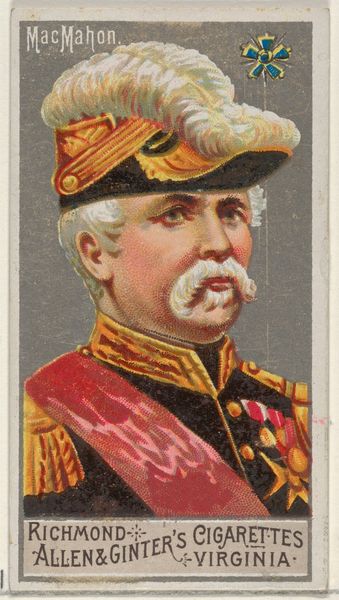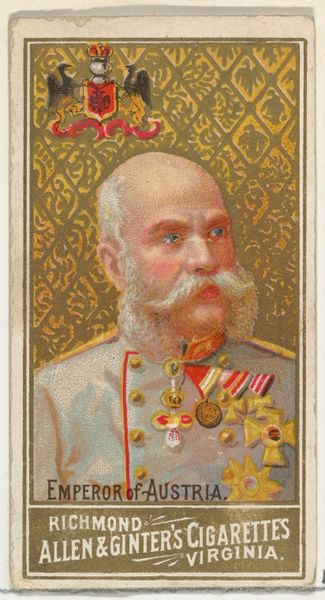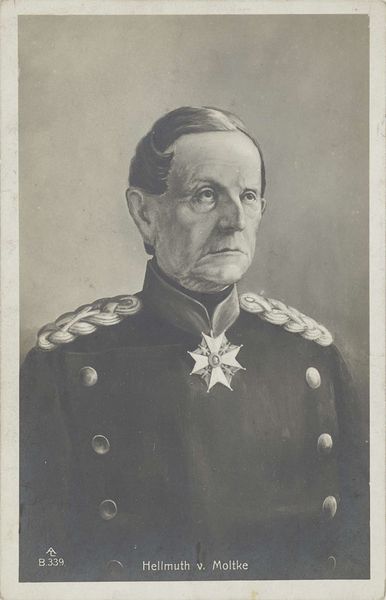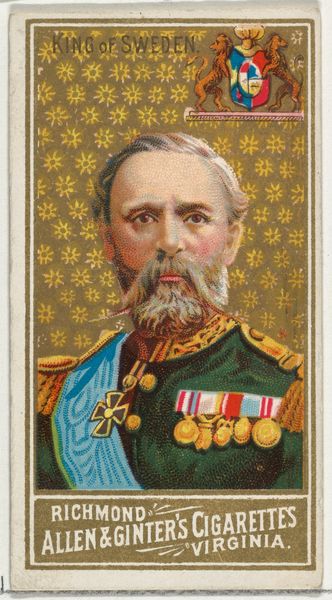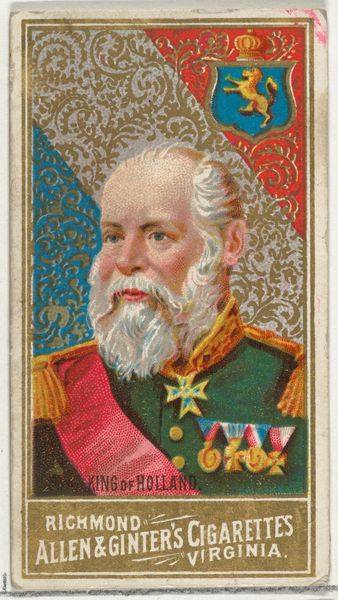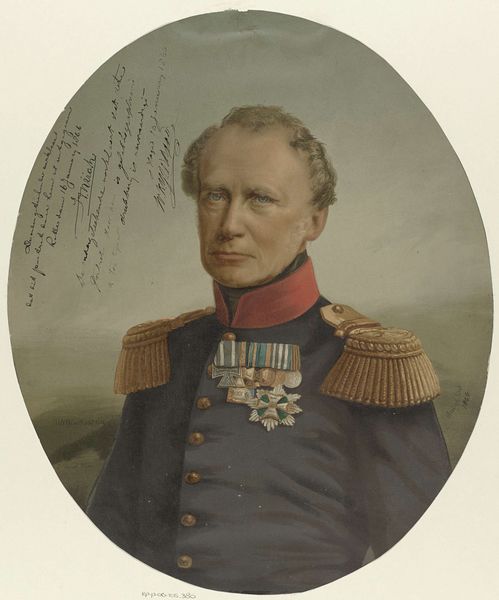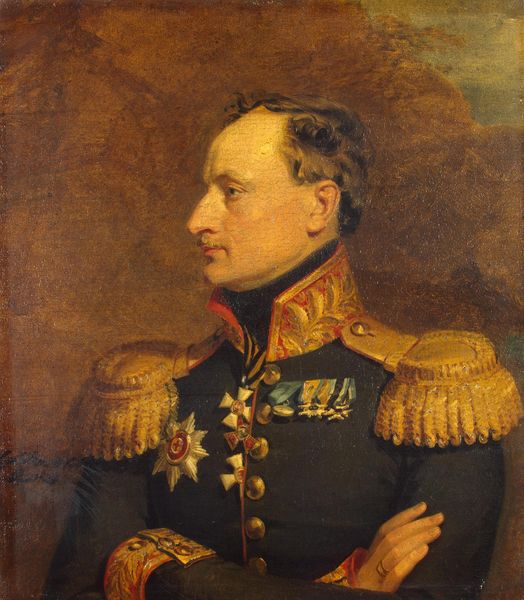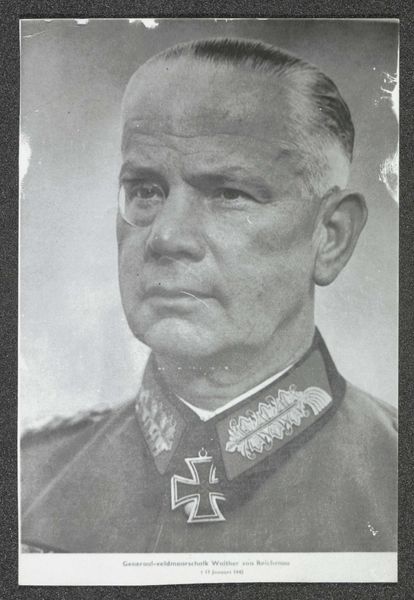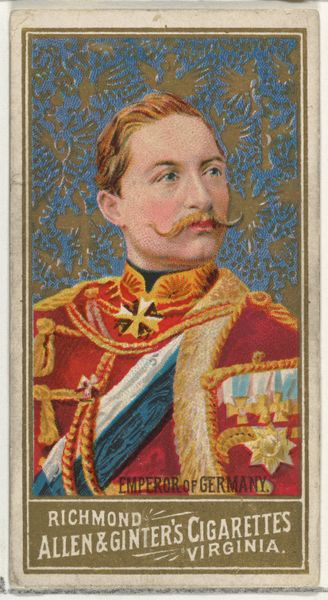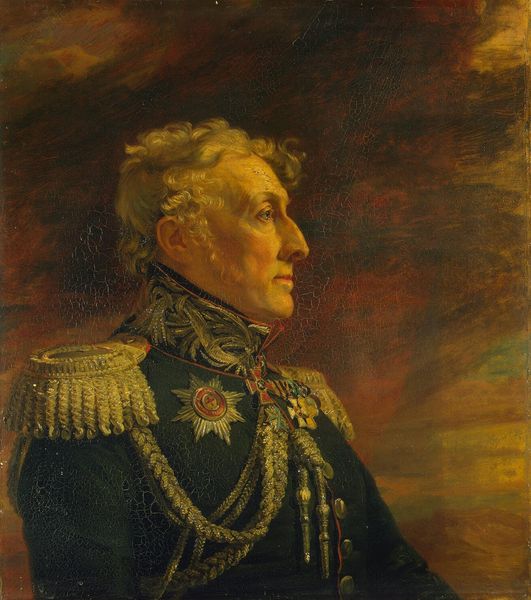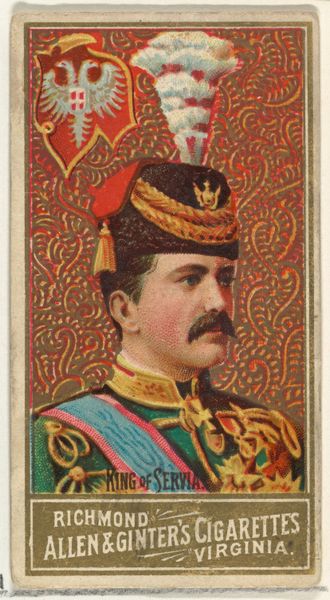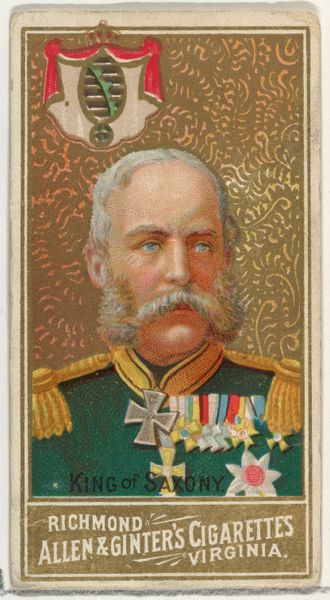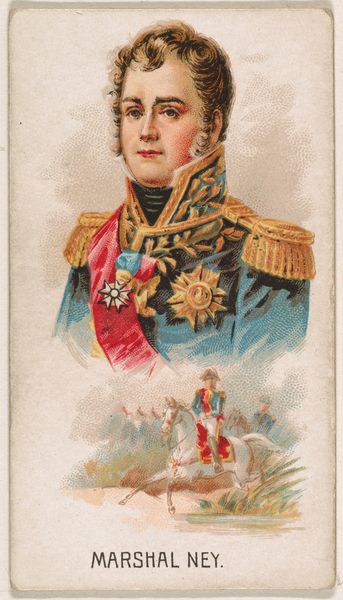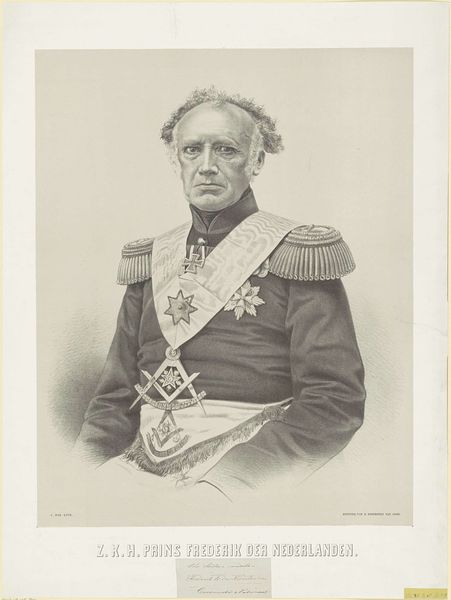
Helmuth Karl Bernhard Graf von Moltke, from the Great Generals series (N15) for Allen & Ginter Cigarettes Brands 1888
0:00
0:00
drawing, lithograph, print
#
portrait
#
drawing
#
lithograph
# print
#
caricature
#
portrait drawing
#
genre-painting
#
history-painting
#
portrait art
#
profile
#
realism
Dimensions: Sheet: 2 3/4 x 1 1/2 in. (7 x 3.8 cm)
Copyright: Public Domain
Editor: This lithograph print from 1888 is titled *Helmuth Karl Bernhard Graf von Moltke*, part of the *Great Generals* series by Allen & Ginter Cigarettes. It’s fascinating that a portrait like this would be on a cigarette card! It's quite formal and seems to glorify militarism. What can you tell me about why this image exists and what its purpose was? Curator: Well, placing generals on collectible cards served a very specific function. It was about branding and marketing, associating the Allen & Ginter Cigarettes brand with power, prestige, and historical significance. How might the consumption of cigarettes be linked to notions of masculinity and national pride during that period? Editor: So, it was a way to tap into the public's fascination with military heroes and connect it to everyday life? Curator: Exactly! And consider the context: this was a period of intense nationalism and militarism, particularly in Europe. Figures like Moltke were seen as symbols of national strength. By placing him on a cigarette card, Allen & Ginter was not just selling a product, but also selling an idea – an idea of American strength by mirroring powerful European figures. Does the card make any statements about Allen & Ginter’s cultural ambitions and intended audience? Editor: That's really interesting. So, it's less about celebrating art and more about leveraging existing social and political attitudes to sell cigarettes? I hadn’t thought of it that way, it definitely was more strategic than artistic. Curator: Precisely! It reveals the complex relationship between art, commerce, and cultural values in shaping public perception, what do you make of how this kind of portrait may impact museum visitors today? Editor: Now I see how understanding the history of its production changes the way we view it today. Curator: Indeed!
Comments
No comments
Be the first to comment and join the conversation on the ultimate creative platform.
